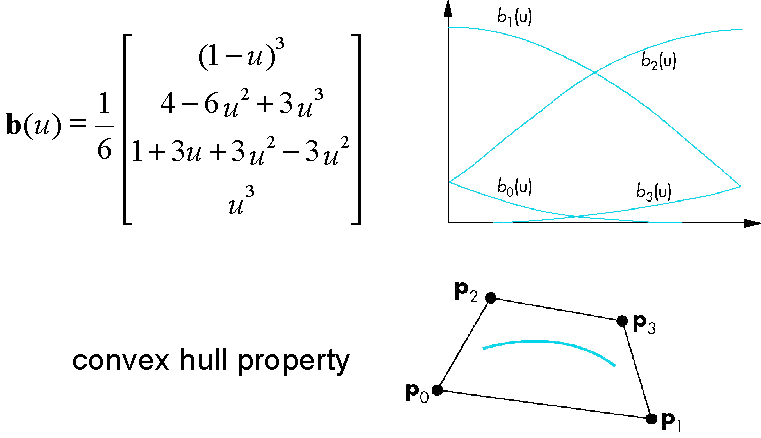CHAPTER 12 - Bezier and Spline Curves, Surfaces
- Introduce the Bezier curves and surfaces
- Derive the required matrices
- Introduce the B-spline and compare it to the standard cubic Bezier
Bezier's Idea
- In graphics and CAD, we do not usually have derivative data
- Bezier suggested using the same 4 data points as with the cubic interpolating curve to approximate the derivatives in the Hermite form
Approximating Derivatives

Equations
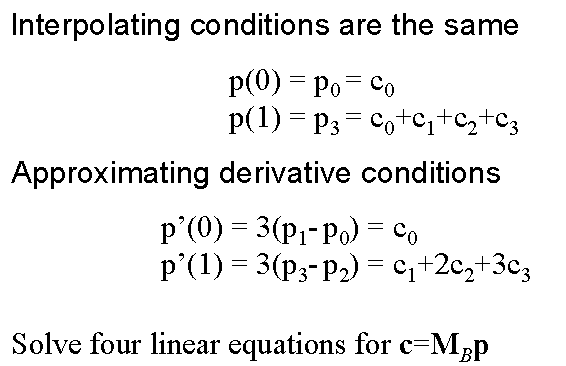
Bezier Matrix

Blending Functions
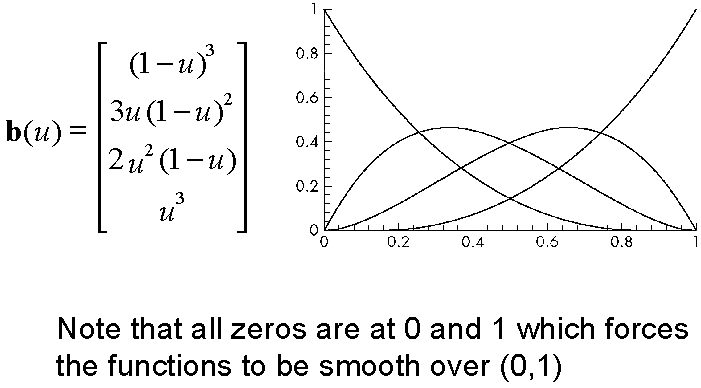
Bernstein Polynomials

Convex Hull Property
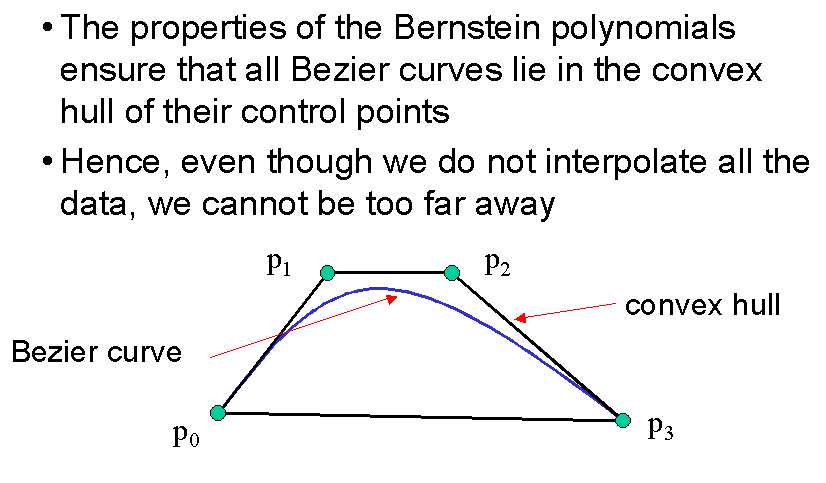
Bezier Patchs
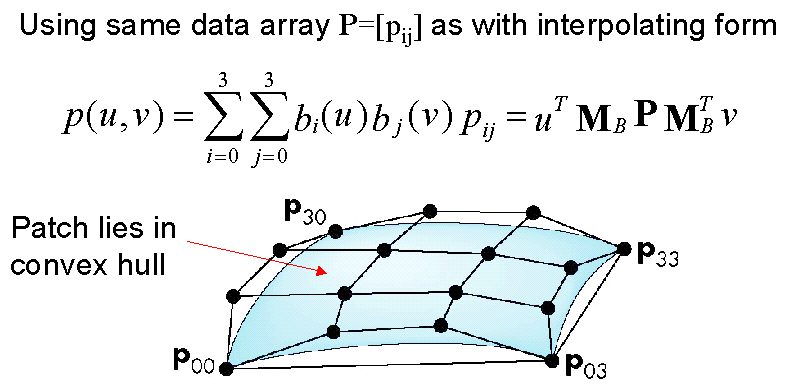
Analysis
- Although the Bezier form is much better than the interpolating form, the derivatives are not continuous at join points
- Can we do better?
- Go to higher order Bezier
- More work
- Derivative continuity still only approximate
- Supported by OpenGL
- Apply different conditions
- Tricky without letting order increase
- Go to higher order Bezier
B-Splines
- Basis splines: use the data at p=[pi-2 pi-1 pi pi-1]T to define curve only between pi-1 and pi
- Allows us to apply more continuity conditions to each segment
- For cubics, we can have continuity of function, first and second derivatives at join points
- Cost is 3 times as much work for curves
- Add one new point each time rather than three
- For surfaces, we do 9 times as much work
Cubic B-Spline
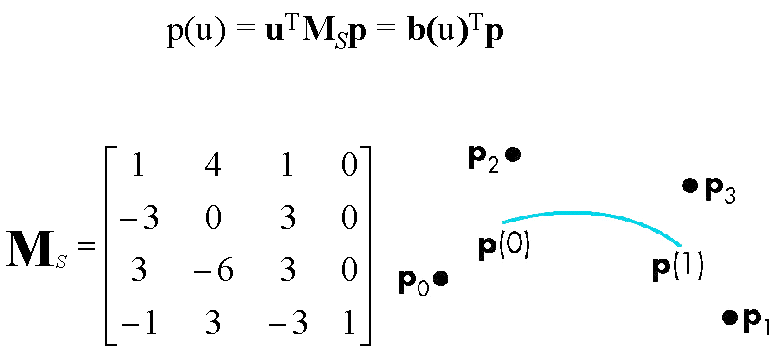
Blending Functions
B-Spline Patches

Splines and Basis
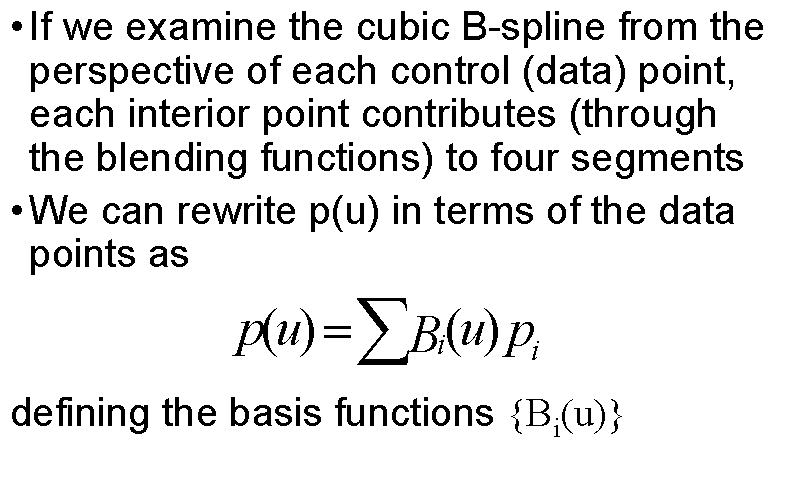
Basis Functions
Generalizing Splines
- We can extend to splines of any degree
- Data and conditions to not have to be given at
equally spaced values (the knots)
- Nonuniform and uniform splines
- Can have repeated knots
- Can force spline to interpolate points
- Cox-deBoor recursion gives method of evaluation
Nurbs
- Nonuniform Rational B-Spline curves and
surfaces add a fourth variable w to x,y,z
- Can interpret as weight to give more importance to some control data
- Can also interpret as moving to homogeneous coordinate
- Requires a perspective division
- NURBS act correctly for perspective viewing
- Quadrics are a special case of NURBS


